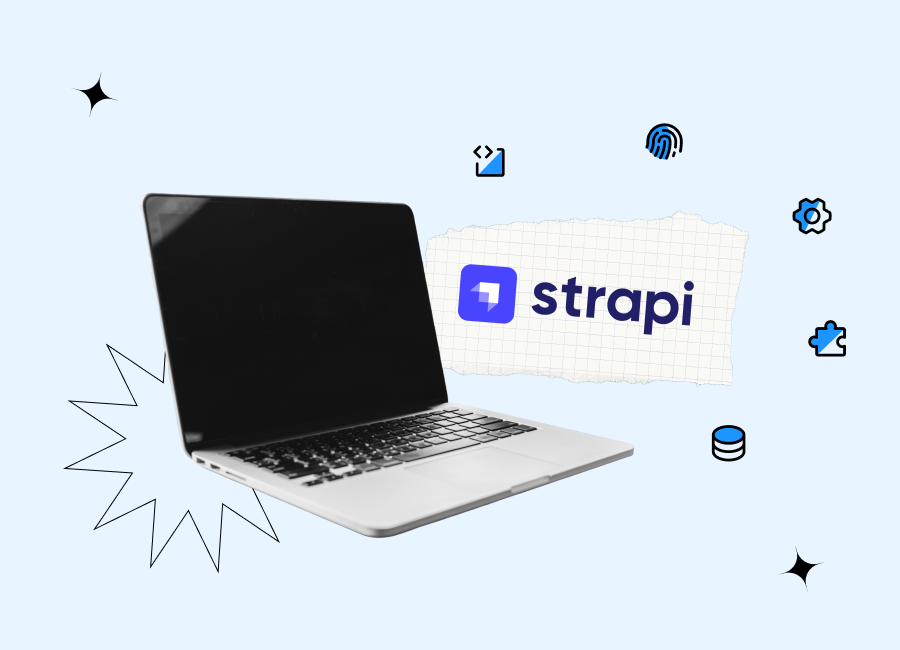It used to be that, to learn a foreign language, you needed to buy dictionaries, textbooks and phrase books and attend courses in person. Today there are lots of interesting opportunities to learn grammar and vocabulary while on the go. For example, you can use one of the mobile applications that have been developed for people of different ages and with different learning preferences. In this article, we’ll offer a series of practical tips to help you to make a language learning app and win the hearts of your target audience.
Overview of the language learning app market
The language learning app market was valued at $18.2 billion in 2022, and analysts expect this figure to hit $32.5 billion by 2029. The number of language learning applications in the marketplace continues to grow, thanks in large part to the low cost of learning with these apps. Some apps are absolutely free, while others are paid or offer paid plans with advanced features. Secondly, apps bring great convenience and flexibility to learning. You can use a language learning app to improve your proficiency while waiting in a queue, riding a bus, or sitting at a boring event.

Thanks to modern technologies and approaches used by developers, the educational process can be highly engaging and entertaining, even for those who thought they hated learning new languages.
As of the beginning of 2023, the world’s most popular language learning app was Duolingo. In February 2023 alone, almost 13.4 million people downloaded this application to their devices. As we can see from the graphic, OckyPocky, an application that had 2.18 million downloads within the same period of time, has a long way to go to match its competitor.

How does Duolingo work?
If you’re considering how to make a language learning app like Duolingo, you’ll need to understand what makes this app special and what opportunities it offers to users. Today Duolingo has courses for more than 40 languages, and 39 of those are available to English speakers. English courses are offered in 25 languages. The application can be used by people of various ages.
The courses are based on interactive exercises that help users develop reading, speaking, listening, and writing skills simultaneously. When a user starts a course, it is necessary to indicate the level of knowledge of the chosen language so that the app can offer the appropriate complexity of tasks.
When a person is making progress along the learning path, the exercises become more challenging, and more attention is paid to writing and speaking.
This language-learning app provides plenty of gamification elements that make the learning process even more exciting:
- Experience points (XP);
- Leaderboards;
- Streak (a number of days in a row without missing lessons);
- Hearts (“lives” in games);
- Gems (a currency for buying various bonuses in the shop).
If you have plans to create an app like Duolingo, we strongly recommend you think about enriching it with gamification elements to add more excitement to the learning process.
As for monetization, the app allows users to learn languages completely for free. But it also has a premium subscription that allows an ad-free experience, the ability to leverage unlimited Hearts, and review your mistakes.
7 steps to create a language-learning app like Duolingo
The process of creating any language-learning app involves a series of steps that will allow you and your development team to launch a solution in full accordance with ongoing market demands and requirements.
Step 1. Preparation
This step is typically devoted to creating a detailed concept and analyzing market research. It’s important to find out what solutions already exist and what they offer to users, while defining their weaknesses so as to understand what you can do to address market gaps.
Step 2. Requirement gathering
Once you have all the information needed about the market and the tasks you want to solve with your product, you can write your requirements for the app. It is necessary to indicate what features you want to build, what external services you need to integrate, and how user interaction with your app should be organized.
Step 3. Tech stack selection
This task is usually performed in close cooperation with your development team. Based on your requirements and the devices your mobile app should be compatible with, developers will help you choose the most appropriate tech stack.
Step 4. Design and development
This step is central to the entire process of project realization. While designers will need to create user-friendly interfaces, developers will work on building the desired features. Quite often businesses decide to develop an MVP first to check whether the idea of the application will be positively welcomed on the market.
In parallel, you’ll need to create learning content (lessons, tests, quizzes, games, etc.) that will be available to app users.
Step 5. Testing
Teams that follow current principles in software development usually start conducting manual and automated tests at the development stage. This approach allows them to detect and fix bugs and vulnerabilities as soon as possible. When all changes are introduced, it’s time for regression testing that will show whether everything works as planned.
Step 6. Launch
When all the bugs are fixed and everything is prepared, the app can be launched and published on app marketplaces, where it can be downloaded by users.
Step 7. Maintenance and support
After the launch, you need to monitor the performance of your app to quickly solve any issues with its functioning. Moreover, we recommend you track what users think about your app and introduce changes that may be required based on their feedback. For instance, you may detect that users want the ability to pass revision tests after each block of lessons. You can add this feature and make it available in one of the app updates.
It is also important to think about the best market positioning and promotion of your app and to find the best ways to let people learn about the existence of your app. There are various options. For example, you can advertise your application on websites for language learners, on different social media groups, or cooperate with influencers.
Have an idea for a language learning app and need help with its development?
Let us know! We will analyze your idea and offer the best approach to your project realization.
Top features of a language-learning app
Before building any educational app, it’s crucial to deeply study the needs and expectations of your target audience as well as take into account the market trends. That’s why the functionality of apps created for people of different languages and from different social groups can vary greatly. Nevertheless, some features are relevant in a wide range of cases. You can use them as inspiration for your future project.

- Simple sign-up and sign-in. The easier all the steps are, the better. You can also allow registration via social media accounts, which will let users sign up just in a few seconds.
- Language preferences & course selection. There should be a list of available courses with short descriptions so that users can choose languages of interest to them.
- Social media sharing. You can let users share their achievements on their accounts on social media, which can help you attract the attention of a wider audience to your e-learning product.
- Microlearning. This concept involves breaking down huge courses into small parts or lessons. This approach makes it easier for users of a mobile app to organize their learning time and study new information in small bites.
- Gamification. Leader boards, bonuses, rewards, contests, and other elements of gamification can be cool motivators for people of all ages. When people can see their results and compare them with others, the entire learning experience can become a very inspiring and successful journey for them.
- Progress tracking. Even if you do not believe that introducing a leaderboard in your language app is an appropriate idea given your target audience, you can skip it and offer another tool for users. Progress tracking tools will allow learners to monitor their results, better understand the milestones that they need to achieve, as well as estimate their success in accordance with their achievements.
- Payments. If you have any paid options on your app, it is recommended to make it possible to pay directly via an application. In this case, we recommend you pay enough attention to this functionality and make it as secure and reliable as possible. Any vulnerabilities can lead not only to financial losses but also to your reputational damage.
- Push notifications. Notifications can be sent to users to remind them of uncompleted lessons or unlocked rewards. It’s a good idea to make this feature customizable. as some people may find notifications irritating.
- Speech recognition and pronunciation feedback. Thanks to the progress made in AI-powered app development, today you can enrich your application with tools that will allow users to practice their pronunciation without the help of teachers or tutors. The required feedback and recommendations will be provided automatically in real-time.
- Quizzes and flashcards. This functionality may seem to be too simple due to the fact that it appeared even in the first learning apps that were introduced more than a decade ago. However, it doesn’t mean that such features have lost their efficiency. They are still relevant and very helpful to different groups of learners.
How to monetize language learning apps?
One of the most important business-related decisions that you should make when you are planning to launch a language app is how you will make money from it. It is vital to make sure that your investments in app development will pay off and that you will start getting profits as soon as possible. There are several ways to monetize a mobile app and you should opt for the most appropriate one (or ones) given your target audience and general marketing strategy.
- Paid downloads. Though this strategy of monetizing a mobile app may seem to be the easiest one, it can not be very efficient. People are typically ready to pay for something that they are familiar with. When they have never heard about your language app, it is highly unlikely that they will pay and install your product once they see it.
- Subscriptions. This is a very popular monetization method among businesses that deliver learning apps. In this case, people do not need to pay for downloading your app, instead, they will pay for using it. You can offer them a free trial period that will help them understand whether they like the offered approach to learning languages or not.
- In-app ads. This way of getting profits is quite straightforward. You just need to place ads of different brands (very often mobile apps). Though many businesses like this approach, it is necessary to be very careful with it in order not to let ads spoil the learning experience for users.
- In-app purchases. This idea can be a great one if you introduce some elements of gamification to your language app. You can offer users to create their own avatars. If they want to personalize them with additional accessories, they can be available on a paid basis. Another idea is to offer some extra learning materials like books in electronic formats that can be purchased via your app.
- Premium features. This model presupposes that language learning apps with all the basic features and tools are offered for free. However, those people who want to diversify their learning experience can pay for advanced functionality. For example, you can add extra lessons with audio and video formats or an AI-powered grammar checker as advanced functionality.
How much does it cost to create an app like Duolingo?
Development costs are one of the key questions our clients have when they turn to our team. But it is impossible to provide any exact figures without taking into account a series of factors that include but are not limited to the following:
- desired features to be built;
- number and complexity of integrations;
- size of the team that will be working on your app; and
- tech stack.
That’s why, when customers share their requirements for their educational app with us, we need to analyze all of them to provide a precise estimate. If you work with us, our experts will also offer ways to optimize costs to make them appropriate for your budget.
One of the ways to minimize your financial risks is to start your project realization with the launch of an MVP (minimal viable product) instead of full-scale app development. Thanks to creating an app version that will include only the most basic features, you can allow users to get familiarized with your idea, and at the same time, you do not need to invest in it just at once heavily. Based on their feedback, you can introduce any required changes and proceed to build a full version of your application with confidence that you will reach the desired results.
How long does it take to make a language-learning app?
The timeframe of any development project involving an educational app depends, first of all, on the scope of work, the complexity of tasks, and the number of experts who will be engaged in building a solution for you. Developing full-scale language-learning applications can take around 5-10 months (or more if you want to build a more complex solution). Developing an MVP that will have a very limited number of features and will help you test the feasibility of your product may take just 2-3 months.
Challenges of language-learning app development
Any mobile app development project faces numerous challenges, and an educational app is no exception. But the more you know about the nature and specificity of these pitfalls, the better prepared for them you can be.
- Compatibility with different mobile devices. When you’re planning to create an app like Duolingo, you’ll obviously want to reach a wide target audience. It’s difficult to predict what devices people will use to interact with your application. That’s why you need to make sure your product will be compatible with screens of different sizes and shapes, including the foldable phone screens that are gaining popularity.
- Protection of user data. Security should be a top priority for you, starting from the first stages of the development process. The team should bear in mind the necessity to protect users’ sensitive data, and especially their banking details if you offer paid functionality on your application.
- Online and offline mode. It’s crucial to make the learning process as comfortable as possible for users. When you offer a language-learning app, it is highly unlikely that people will want to use it only when sitting at home with a strong WiFi signal. That’s why you need to think about the functionality that will be available when users are offline, to let them continue learning a language regardless of their location.
Best language learning apps like Duolingo
When you are planning to start an app development project, it will be always very useful to consider some of the most successful applications from the chosen category for inspiration. Of course, it won’t make sense just to copy a great language app. However, it will be an excellent idea to see what other learning apps offer to stand out from the crowd.
Duolingo with its green owl called Duo is already well-known to a very wide audience. But are there any other language-learning apps that can be viewed as alternatives?
- FluentU. This mobile app which is available to both iOS and Android users provides the possibility to learn languages in real-world contexts based on news, music videos, movie trailers, and various speeches. The app can turn all these materials into personalized lessons for people. Users can just choose any video from the offered range and enjoy their unique learning experience. The app offers interactive captions for learning new words and enriching vocabulary. FluentU also provides unique adaptive quizzes.
- Babbel. This application has managed to win high popularity among language learners. It offers short lessons which means that everyone can easily find time during the day for studying. Thanks to speech recognition tools, users can practice and improve their pronunciation, as well as master their reading, listening, and writing skills. Many users say that the possibility to download lessons and work with them offline is also a great idea, especially when they know that their connection can be unstable.
- Lingodeer. This app introduces a more traditional approach to learning languages as it is focused on grammar. There is a wide range of lessons designed for different languages and each of them includes various games, quizzes, tests, and fill-in-the-blank tasks. Users can also get access to study notes that help them better understand the new content.
Educational app development by Cogniteq
If you’re looking for a team that will be able to create an educational app in full accordance with your requirements, Cogniteq is an excellent choice. Our company works with clients from a wide variety of industries, and that’s why our portfolio includes a range of amazing projects of various types.
One example of solutions created by our team is an e-learning platform for online courses with video streaming. The key idea behind the project was to build a solution that will allow both organizations and individuals to easily set up virtual classrooms for organizing lectures, workshops, seminars, corporate training, etc. We were responsible for building a web platform as well as iOS and Android mobile applications fully from scratch.

The solution’s functionality allows for conducting video streaming sessions with a live chat, tools for assessing courses, testing student knowledge, and conducting certification. The mobile application is available in both offline and online modes, which ensures broad possibilities for continuing to learn on the go.
It is a unique solution that has very few rivals on the market. It has been successfully launched and now boasts great popularity among universities and corporate clients.
Conclusion
A language-learning app can become a great project with a high chance of winning users’ attention. This type of app can provide users with a comfortable, straightforward, and enjoyable way to develop language skills and gain new knowledge, regardless of their location and the time they have available to devote to learning.
If you have an idea for a language learning app or any other e-learning solution, we are always happy to support you in realizing your project. With our expertise in developing solutions for this market, we are confident that we will be able to help you build an educational app that will not only meet your requirements but go far beyond your expectations.
Just contact us via our website. Let’s discuss what our team can do for you.










































